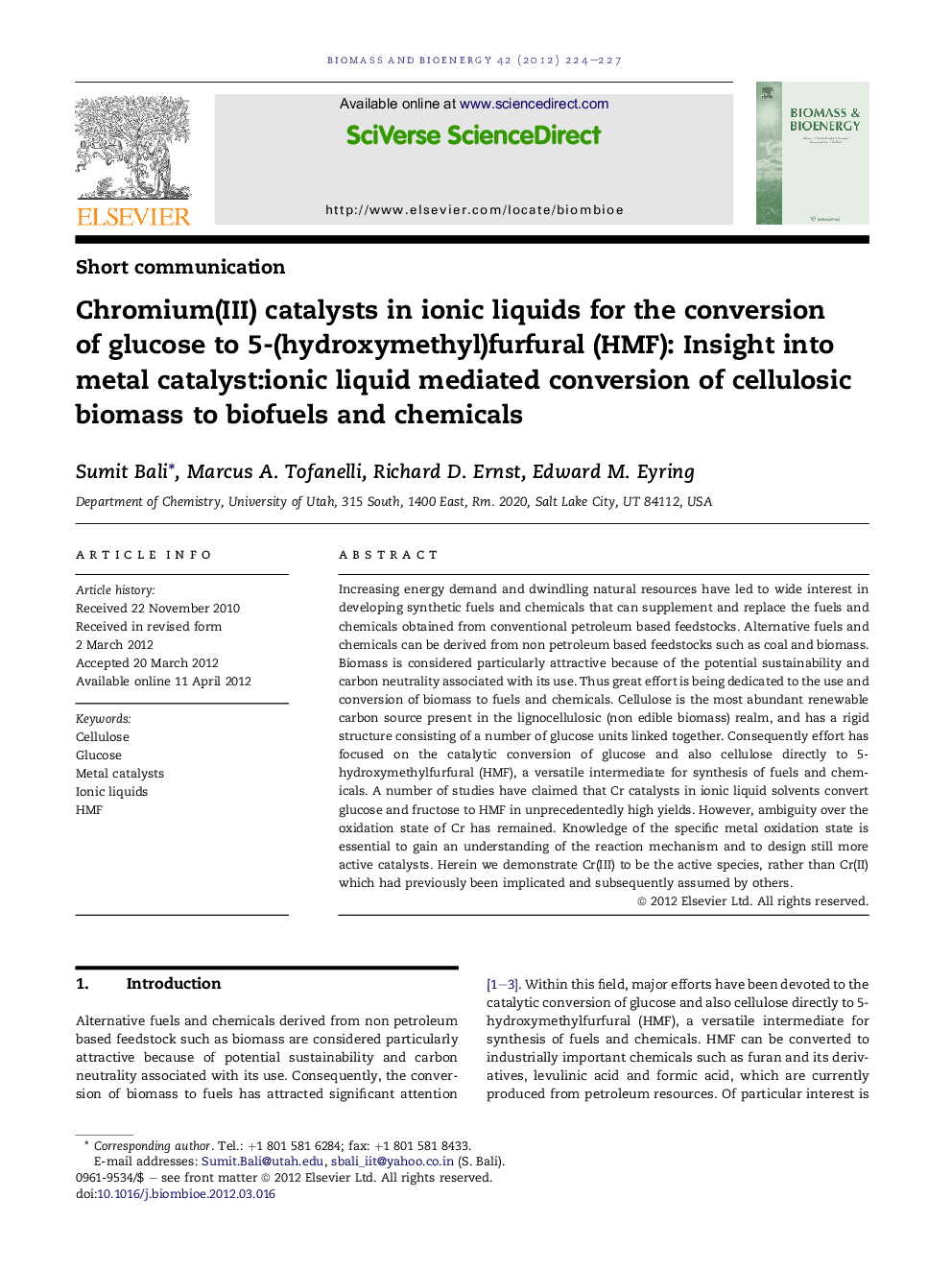| Article ID | Journal | Published Year | Pages | File Type |
|---|---|---|---|---|
| 677452 | Biomass and Bioenergy | 2012 | 4 Pages |
Increasing energy demand and dwindling natural resources have led to wide interest in developing synthetic fuels and chemicals that can supplement and replace the fuels and chemicals obtained from conventional petroleum based feedstocks. Alternative fuels and chemicals can be derived from non petroleum based feedstocks such as coal and biomass. Biomass is considered particularly attractive because of the potential sustainability and carbon neutrality associated with its use. Thus great effort is being dedicated to the use and conversion of biomass to fuels and chemicals. Cellulose is the most abundant renewable carbon source present in the lignocellulosic (non edible biomass) realm, and has a rigid structure consisting of a number of glucose units linked together. Consequently effort has focused on the catalytic conversion of glucose and also cellulose directly to 5-hydroxymethylfurfural (HMF), a versatile intermediate for synthesis of fuels and chemicals. A number of studies have claimed that Cr catalysts in ionic liquid solvents convert glucose and fructose to HMF in unprecedentedly high yields. However, ambiguity over the oxidation state of Cr has remained. Knowledge of the specific metal oxidation state is essential to gain an understanding of the reaction mechanism and to design still more active catalysts. Herein we demonstrate Cr(III) to be the active species, rather than Cr(II) which had previously been implicated and subsequently assumed by others.
► Cr(III) and not Cr(II) is the active catalyst for the conversion of sugars to HMF. ► The substitution inertness of Cr(III) is largely responsible for its activity. ► Cr(III) complexes with weak ligands are very active catalysts for making HMF. ► Other substitution inert ions also yield active catalysts for making HMF.
